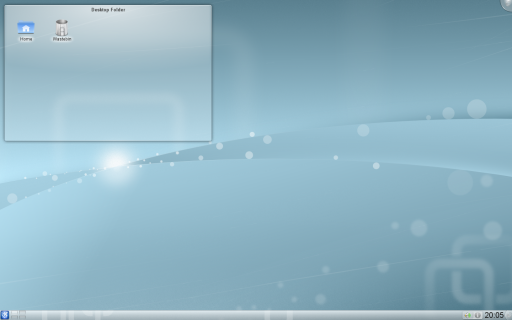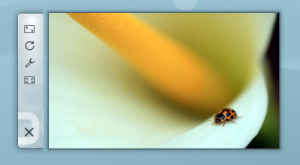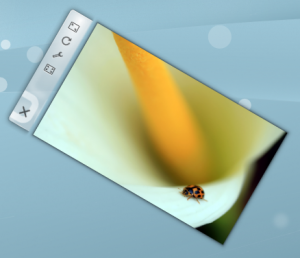Plasma/ca: Difference between revisions
No edit summary |
Created page with "Per a posar un estri a l'escriptori només s'ha d'arrossegar des de l'explorador d'estris. Per a posar-lo en el primer plafó obriu la caixa d'eines d'aquest i des d'allí obriu ..." |
||
| Line 57: | Line 57: | ||
* fent clic dret a l'escriptori i seleccioneu <menuchoice>Afegeix estris</menuchoice> des del menú contextual. | * fent clic dret a l'escriptori i seleccioneu <menuchoice>Afegeix estris</menuchoice> des del menú contextual. | ||
Per a posar un estri a l'escriptori només s'ha d'arrossegar des de l'explorador d'estris. Per a posar-lo en el primer plafó obriu la caixa d'eines d'aquest i des d'allí obriu l'explorador d'estris (feu clic a <menuchoice>Afegeix estris</menuchoice>), cerqueu l'estri que voleu afegir i arrossegueu-lo fins a la posició desitjada. | |||
{{Note|1=You can not add widgets if they are locked. Open the Desktop Toolbox or the Panel Toolbox or right click on the Desktop - if you see an item labled <menuchoice>Unlock Widgets</menuchoice> then select that, and then proceed to add widgets to your Desktop or your Panel. | {{Note|1=You can not add widgets if they are locked. Open the Desktop Toolbox or the Panel Toolbox or right click on the Desktop - if you see an item labled <menuchoice>Unlock Widgets</menuchoice> then select that, and then proceed to add widgets to your Desktop or your Panel. | ||
Revision as of 12:04, 3 March 2011
Una primera vista
Un escriptori Plasma típic té el següent aspecte:

Els quatre components principals d'un escriptori Plasma per omissió són:
- El plafó, a vegades anomenat «la barra de tasques», que proporciona espai per al llançador d'aplicacions, la llista de finestres (programes), el rellotge i la safata del sistema;
- L'escriptori, la zona on estan els estris i les icones;
- La vista de carpeta, un estri que mostra el contingut d'una carpeta a l'ordinador, i que a més proporciona accés ràpid a tasques de gestió de fitxers bàsiques;
- La caixa d'eines de Plasma, es troba a la part superior dreta de la pantalla així com en un extrem del plafó. S'utilitza per accedir a la configuració i altres opcions de forma ràpida i segura.
Tots aquests ítems per omissió són totalment configurables i poden albergar una àmplia varietat d'eines i contingut.
PMF sobre l'escriptori Plasma
Una «PMF -preguntes més freqüents-» per a la versió actual de l'escriptori Plasma es troba en aquesta pàgina. Proporciona respostes breus a preguntes comunes així com enllaços a les preguntes més freqüents de versions anteriors.
Trobeu la vostra pròpia manera d'utilitzar Plasma
Pots usar Plasma de la mateixa manera que usaríeu l'escriptori de qualsevol altre sistema operatiu: Accedint al llançador d'aplicacions, veient els programes actius en la barra de tasques, accedint a les icones en la safata del sistema, i així successivament.
Una part important de Plasma són els «estris». Aquests són unitats individuals de l'escriptori i inclouen (encara que no es limiten a) el menú d'aplicacions, les icones, la safata del sistema, el rellotge, etc. Els estris poden existir en l'escriptori mateix, o es poden ancorar en el plafó, en l'estalvi de pantalla o en el tauler entre altres llocs. Els estris poden servir per a moltes tasques, a més de ser ajudants de l'escriptori, incloent eines per a microbloc (Twitter, identi.ca), conversió d'unitats, calculadora, predicció meteorològica, per a compartir fitxers i molt més. Els plafons i escriptoris també són un tipus especial d'estri, destinats a contenir a altres estris.
Com es relaciona amb l'ús de l'escriptori? Plasma té algunes noves característiques pel que fa als escriptoris tradicionals. Ja hem esmentat les caixes d'eines de Plasma: són el camí per començar a interactuar i personalitzar l'escriptori Plasma. Fent clic en elles, apareixerà un menú en la pantalla amb una varietat d'opcions: Des d'on podeu afegir estris al vostre plafó o escriptori, amidar, afegir o eliminar plafons, canviar el fons de pantalla i altres operacions.
Vistes de carpeta
Com podeu observar en la instantània de a sobre, no hi ha icones col·locades directament en l'escriptori. En el seu lloc, estan situades en un contenidor anomenat «Vista de carpeta». Per omissió, la vista de carpeta mostra la carpeta Desktop (Escriptori) i se us hi permet arrossegar, obrir, tallar, copiar, enganxar i reanomenar fitxers, fins i tot crear fitxers i carpetes.
Podeu tenir més d'una vista de carpeta en l'escriptori, i també posar-les en els plafons. Podeu configurar-la per a mostrar qualsevol carpeta, tant local com a remota, a la que tingueu accés. Cadascuna es pot moure i canviar de grandària al vostre gust.
La vista de carpeta també es pot configurar com un escriptori a pantalla completa amb un disseny més tradicional de «icones disperses per l'escriptori». Visiteu la pàgina de vista de carpeta per descobrir com fer això i molt més.
Plafons

Els plafons us permeten col·locar estris al voltant de les vores de la pantalla. Aquestes col·leccions d'estris es poden configurar de diverses maneres, podent fer que s'ocultin automàticament quan no s'usin o alinear-los a certes àrees de la pantalla.
Per omissió, hi ha un plafó en la part inferior de la pantalla, però n'hi podeu afegir més, moure'ls, configurar el plafó per omissió, i eliminar els que no vulgueu. Els estris dels plafons també es poden ajustar al vostre gust.
Per a més informació sobre la configuració dels plafons en l'escriptori Plasma i sobre el que són capaços de fer, visiteu la pàgina Plafons de Plasma.
Estris

Plasma admet estris escrits específicament per a Plasma (també conegut com a plasmòides), així com estris d'altres fonts com ara Google Gadgets, SuperKaramba i alguns estris Dashboard de Mac OSX. Estris addicionals es poden trobar i instal·lat amb facilitat a través de Obtén novetats candents.
Per veure els estris instal·lats en el sistema i llest per al seu ús obriu l'explorador d'estris de Plasma, ja sigui
- obrint la caixa d'eines de l'escriptori a la part superior dreta de la pantalla i seleccioneu ,
- obrint la caixa d'eines del plafó a la dreta d'aquest i seleccionant o
- fent clic dret a l'escriptori i seleccioneu des del menú contextual.
Per a posar un estri a l'escriptori només s'ha d'arrossegar des de l'explorador d'estris. Per a posar-lo en el primer plafó obriu la caixa d'eines d'aquest i des d'allí obriu l'explorador d'estris (feu clic a ), cerqueu l'estri que voleu afegir i arrossegueu-lo fins a la posició desitjada.
Widgets that are docked into a panel usually have an Options menu, while those on the desktop have the configuration options within the 'handle', the shaded area which pops up when hovering over the widget. Clicking and holding the mouse on the blank part of the handle will allow you to drag the widget to the desired position.

You have four tools on this handle. The top one is the re-sizer. Click and drag on the tool to resize the widget.
The second tool is a rotate tool. Again, click and hold the tool, while rotating to the desired angle.

The third is the wrench or spanner which allows you to configure that particular widget's settings.
Finally, the fourth tool is the "expanded view" tool and is available only on widgets that support this feature, such as the Picture Frame or Web viewers. When clicked, the Picture Frame widget will, for example, open the currently viewed in an image viewer while the Web Slice widget will open the web page in a full web browser window.
A list of Plasma widgets with their own page can be found here, and some of our favourite widgets are discussed on the Plasma Widgets page
Activities

Use Cases
A user likes web comics so they add their favorite web comics via the comics widget. The user now has a full desktop activity dedicated to their favorite web comics. Now the user is happy with the web comics, but the user now has to go to work, so the user creates a activity with the folder view widgets set to the folders of the projects the user is currently working on. After work the user goes home and works on a side project of writing romance novels. The user always gains inspiration by looking at pictures of the user's significant other. The user now creates a new Activity but now puts pictures frame widgets with pictures of the user's significant other. The user also has a folder view of the romance novel project folder. Now no matter what the user is doing the user has a custom tailored activity to match it.
Go to this blog to read a few tips on using activities.
Widget Layouts and Virtual Desktops
Virtual desktops, the ability to have a separate sets of windows on separate desktops, can tie in with Activities. You can have a different activity on each virtual desktop. In Plasma Desktop 4.4, this can be configured by entering System Settings and navigating to Desktop -> Multiple Desktops, and checking "Different Activity for Each Desktop".
In Plasma Desktop 4.3, You configure this by zooming out and choosing "configure Plasma". Then select "use a different activity on each desktop" and zoom in again.
Hints and Tips
Tweaking Plasma
- Learn how to add a sidebar with clock and news
- Customize your Plasma by mixing multiple Plasma themes
Reloading Plasma
Sometimes you might want to reload Plasma, like right after changing system language so the changes takes effect, or because of a problem with the desktop. To do that, open a terminal and run these commands:
kquitapp plasma-desktop
plasma-desktop
Further information
- The Plasma FAQ's
- Plasma HowTo's - short screencasts
- Glossary
- Some of our favourite plamoids - why not add yours?
- Here's how to install more Plasmas widgets
- Learn the versatility of KRunner
| Back to the Introduction page |

